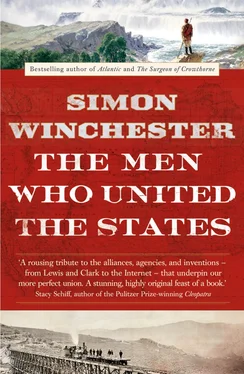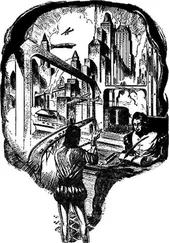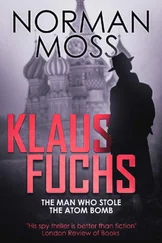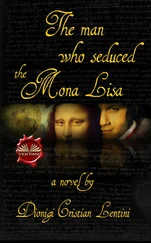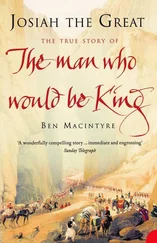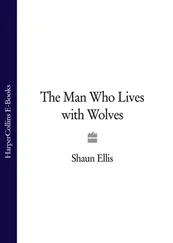The first two volumes of the series that I decided to use were published in 1940 and 1941, respectively: the first was devoted to Ohio; the other, to Missouri. I took them along because I had decided to travel first to a pair of places that seemed to me to have played crucial roles in the making of a united America.
Each town stands on the right bank of a great American river, and in each case the river gave its name to the state in which the town is situated. The first town was East Liverpool, which is both in Ohio and on the Ohio; the second was Saint Charles, which likewise is both in Missouri and on the Missouri. Neither place is especially well known, whatever its chamber of commerce might say. The importance of each has faded over the centuries. Neither seems to me lovely enough to attract many visitors.
But each town was once most important to the man who originated the idea of creating a properly United States of America, a Founding Father who would go on to be the country’s third president, Thomas Jefferson. And each town now has a fine-looking memorial—in one case a plaque, in the other an obelisk—to the events that occurred there and helped make each community briefly famous.
Both memorials are now surrounded—and in the case of one of them, half hidden—by trees. A reminder, if any were needed, that at the time Thomas Jefferson gave these places their brief significance in making the physics of the union, America was a land swathed by long reaches of barely penetrable forest, most of its mysteries still half hidden by wood.
PART I
I never before knew the full value of trees. My house is entirely embossomed in high plane-trees, with good grass below; and under them I breakfast, dine, write, read, and receive my company. What would I not give that the trees planted nearest round the house at Monticello were full grown.
—THOMAS JEFFERSON, LETTER TO MARTHA RANDOLPH, 1793
… I was not prepared to see the pine timber so valuable and heavy as it is above and about here. The trees are of large growth, straight and smooth … With the exception of swamps, which are few and far between, the timber land has all the beauty of a sylvan grove. The entire absence of underbrush and decayed logs lends ornament and attraction to the woods. They are more like the groves around a mansion in their neat and cheerful appearance; and awaken reflection on the Muses and the dialogues of philosophers rather than apprehension of wild beasts and serpents.
—CHRISTOPHER COLUMBUS ANDREWS, Minnesota and Dacotah , 1856
Thomas Jefferson was a man with a lifelong fascination with trees. He thought of them as his favorite kind of plants, wrote of them as his pets, and went to much effort and expense to place those he liked best around the great west lawn of Monticello, the house he made for himself in the foothills of the mountains of Albemarle County, Virginia.
He was an extravagant man, given to extravagant visions—which Monticello’s present-day garden conservators have done much to reproduce. So just as he wished when he first bought Monticello in 1768, there are today long allées of willows, great terraces of magnolias, and stands of sugar maples. There are linden trees, mulberries, and honey locusts; there are oaks and pines and pecans, catalpas and gingkoes and chestnuts, sycamores, walnuts, slippery elm, and Osage orange and border plantings of persimmons, black gums, and fruit-bearing peach trees.
Monticello’s fortunes have fluctuated dramatically over the years—not least because the third president’s excesses left the estate hopelessly mired in his legacy of debt. For many decades the house itself was a magnificent ruin, the estate gardens were left to run wild, and the surrounding forests were choked with underbrush. Some of the greater trees survived the rigors of time and neglect, however, and in recent years it became something of a sport to try to say with certainty which of these gnarled monsters Jefferson himself might have planted. It somehow made the country’s best-beloved Founding Father ever more human to imagine him out in the garden on a summer’s evening, digging the saplings deep into the hilltop’s rich loamy soil, to think of him spreading mulch above their roots and then leaving the shoots to the soothing balms of warm Virginia rains.
An X-ray device invented by a Dutch arborist was recently brought in to work out the age of the nobler-looking trees, and there was much exultation on the mountain when four of them could be proved to be at least two hundred years old—and thus quite old enough to have been planted by Jefferson. But irony has no respect for antiquity: no sooner had these trees been identified as most probably the work of the man himself—or the small army of slaves he had working on his estate—than all four of them keeled over and died.
Two of them were massive but fragile tulip poplars, one of which was fully ten yards around at its base and had begun to pose a dire threat to the building beside it. The others were a larch and a copper beech, immense shade trees under which the aging Jefferson was said to have whiled away many of the afternoons of his latter days. To most there was a gentle poignancy in their passing, because it severed one certain and romantic connection with the man who, above all others, still stands today as the architect of most of the central ideas behind the making of the United States.
But one other connection, a small and little-noticed arboreal conceit at Monticello, also links the man and his vision—and quite literally his vision—with those who visit today. It is a small and cleverly created spy hole in the woods that surround Monticello, and it affords visitors a subtle view of their surroundings that in its own way is every bit as inspirational as that which Jefferson, in laying out the plans for his estate, had once designed for himself.
Monticello faces almost exactly to the west. Were it not for one low hillock in between, Jefferson would have been able to contemplate an uninterrupted panorama clear across to the Blue Ridge Mountains, thirty miles away. The 1,200-foot Montalto—on top of which he once planned to build an observation tower but never did—does slice off some of the ridge’s more southerly aspect. But only a little. Otherwise the view was unobstructed. The trees Jefferson planted around his lawns had not in his lifetime grown tall enough to be much of a barrier, so that toward the end of his life he could sit on his porch and watch the sunset over the distant folds of hills, with only Montalto slightly in the way.
Today, however, this is no longer true. The trees have grown high, and someone sitting where the president liked to take his evening ease could no longer see in the summer his blue remembered hills. Instead he would be confronted by a mighty wall of green—or in October, when the trees take on their autumn colors, a tableau of brilliant yellows and reds and oranges. The view might well be chromatically beautiful, but because of the sheer number of fully mature trees that have sprung up today, it is not at all what Thomas Jefferson saw.
Those who run Monticello today have long sought to re-create the estate just as it was in the fifty-eight years it was his home, views and all. To help achieve this, they have cut a spy hole in the trees. By judiciously pruning and carefully planning, the foresters have cut in the faraway wall of oaks and hemlocks and white pines what looks like a tiny eye-shaped rent—though up close it is a hole probably measuring a good twenty feet by ten, at least. By careful cutting back and shaping, they have managed to keep it clear year after year—with the result that it is quite possible to squint through it and see, or at least to glimpse briefly, a fraction of what Jefferson saw.
Читать дальше
